Advertisement
What to know about the Caribbean Carnival in Boston

This year's Boston's Caribbean Carnival — the sequin-and-feather-bejewled parade and party — is on Saturday, Aug. 24.
The J'ouvert, or "daybreak" parade, will start at 6 a.m. following a modified route that begins and ends inside Franklin Park, while the main parade starts on Martin Luther King Boulevard in Roxbury at 1 p.m. and ends at Franklin Park in Dorchester by 6 p.m. There'll be music, dancing and other entertainment.
It's a day to celebrate Caribbean culture and commemorate the community's resilience.
The history of Caribbean Carnival
Traces of Carnival can be found in ancient Roman and Greek traditions, and took shape in early Christianity. Carnival, or "Carnevale," translates to "without meat." Catholics observed the annual tradition before Lent, a 40-day fast. Revelers would dress up and indulge in alcohol, meat or anything that was typically given up during Lent.
Caribbean Carnival originated in the 18th century, during the height of the transatlantic slave trade. The forced influx of people led to a slow combination of cultures.
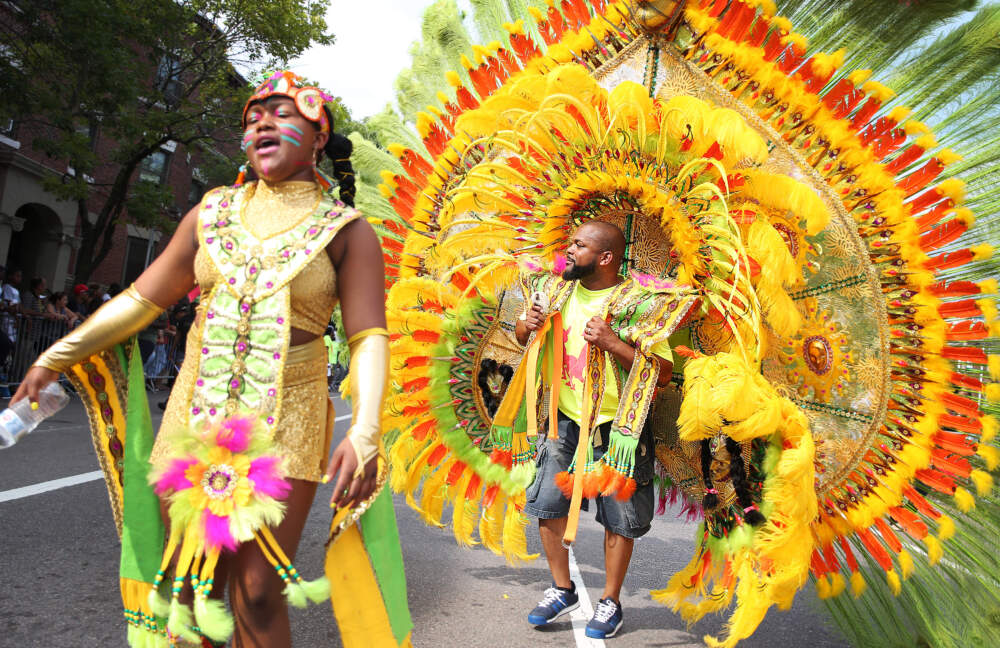
Many participants viewed the tradition as a symbol of resilience in the face of colonialism, said Orlando Lezama, band leader of Misfits Carnival.
"[Carnival] came from actually rebelling against control ... Rebelling against people trying to strip away our identity," said Ulric Johnson, founder and director of Tempo International Rhythm Section, which will perform during this weekend's Carnival. "It's about speaking to that hypocrisy ... you can't stop us from celebrating life."
The first Boston Caribbean Carnival took place in 1973 when Trinidadian Ken Bonaparte Mitchell and American Ivy Ponder proposed the idea to former Boston Mayor Kevin White.
Boston now holds its annual Carnival on the last Saturday in August to avoid overlap with other celebrations, according to Shirley Shillingford, president of the Caribbean American Carnival Association of Boston.
Masquerade
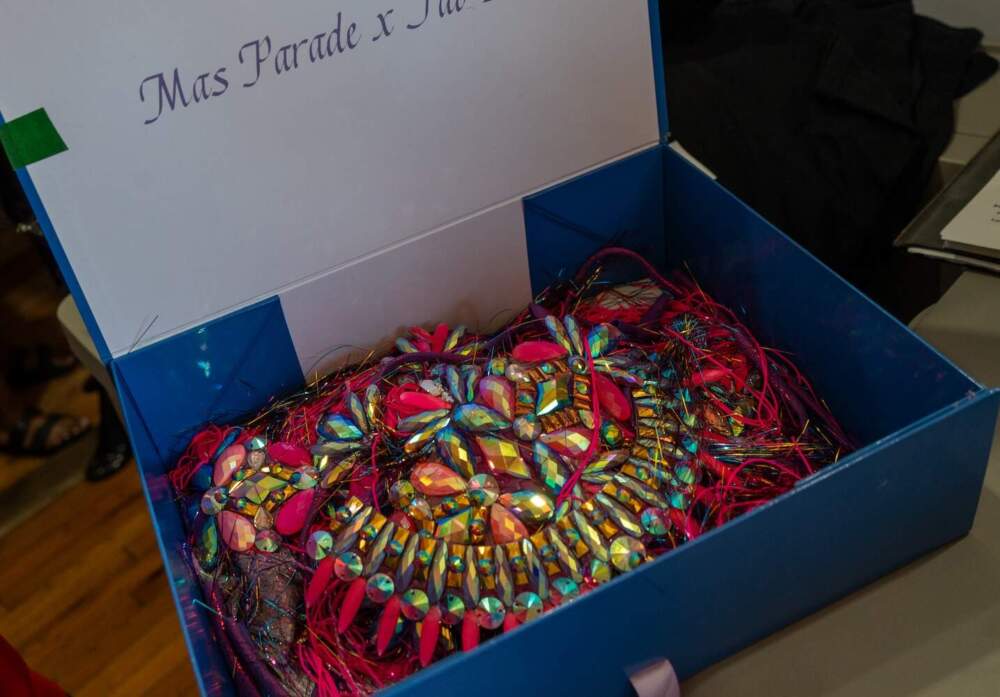
One of the most striking aspects of the Carnival is the rainbow of costumes worn by the masqueraders, or "mas."
Mas took form as a way to mock the enslavers or upper class, said Akeisha Lewis, band leader of Misfit Carnival.
Today, band leaders say the goal is to be more inclusive, and to try and involve anyone interested in participating in the parade.
"We are just all inclusive with no matter who you are — body type, size, culture, where you're coming from — you'll feel comfortable," Lezama said.
Lewis said that every mas camp — or gathering spot for masqueraders — will present costumes under a unified theme.
Misfit Carnival, in collaboration with Soca & Associates and D'Horizon, will embody the theme "Epic" this year.
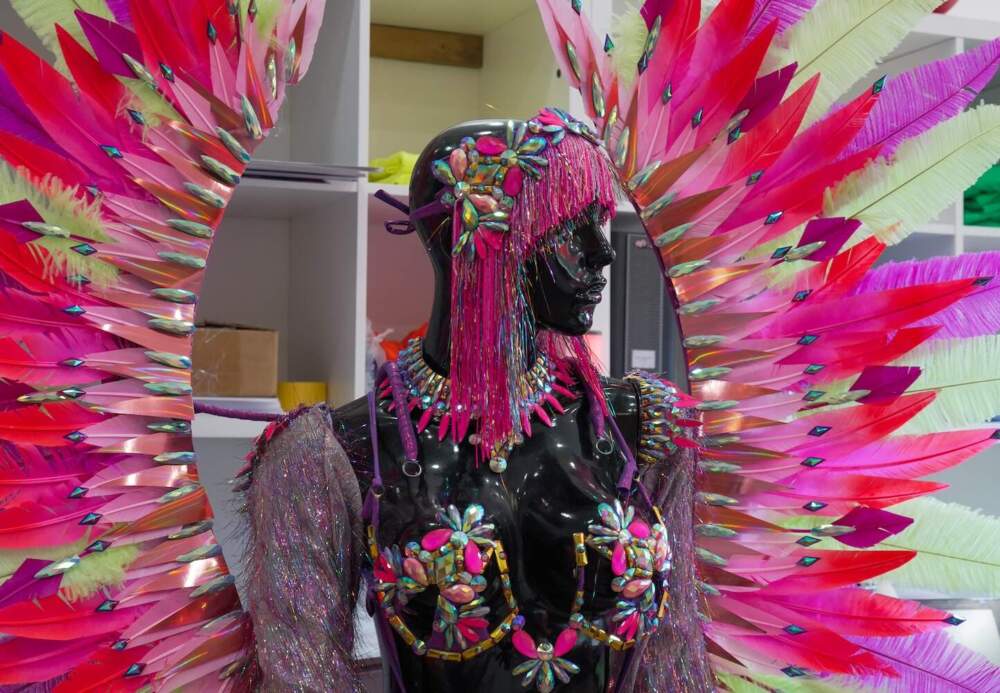
Most costumes will include a jeweled headband and large headpiece; arm and leg pieces; bejeweled wire bra; wings and backpacks.
Marlene Williamson and her daughter Kimberley are both costume designers for D'Horizon. They said a lot of strategy goes into designing and making a unique costume.
For the last 25 years, Marlene Williamson has incorporated jewels and hand-stitched ostrich feathers onto the costumes, a process that sometimes takes up to two months.
"It's a lot of work, a lot of dedication — a lot of sleepless nights ... we put our dues in," Marlene Williamson said.
Kimberley Williamson, who started following her mother's footsteps when she was 8, said she remembers laying out the beadwork on the costumes.
All that hard work doesn't go unnoticed. In the days before the parade, the Carnival organizers will host a competition to pick the mas King and Queen. Judges for the competition are flown in from Trinidad and Tobago.
Advertisement
"[Judges] don't want to see craziness. They want to see you have fun in your posture," Kimberley Williamson said. "And when we perform on stage, we give it our all. We smile, we sing, we wave, we dance, we show glory and pride."
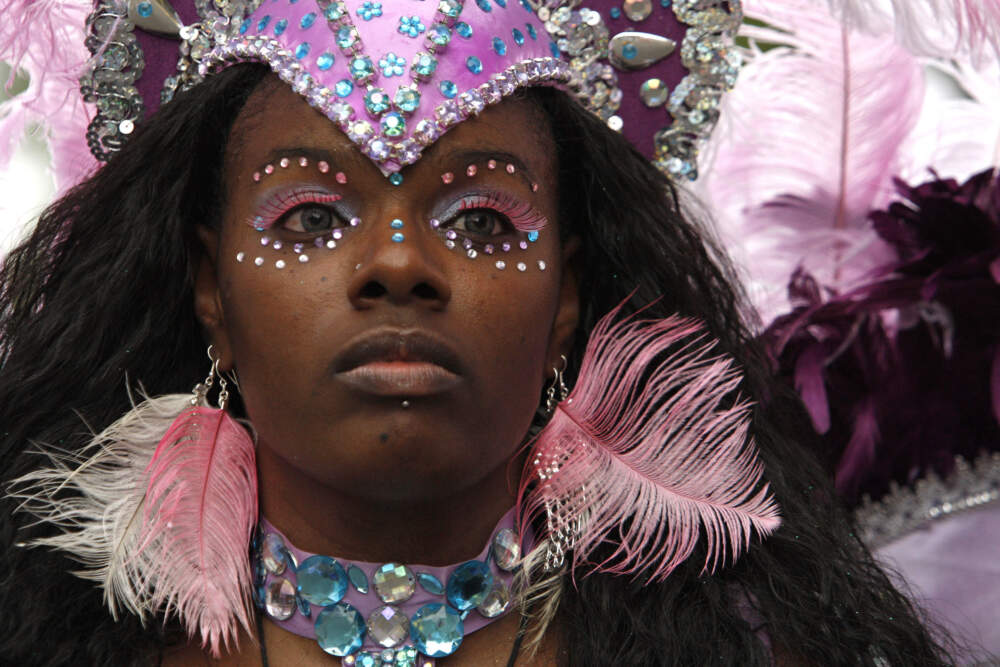
The music of Carnival
The route each year is filled with DJs playing calypso and soca music to accompany the costumed revelers.
"Carnival is basically an expression of freedom, and part of that expression is music and dancing ... you can't have dancing without music," said Roger Libert, DJ and music coordinator at Sound International.
[Playlist by Andrew Williamson, also known as DJKillaD of Sound International]
But while modern music is now blared through speakers on moving trucks, Carnival still features the steel bands that have traditionally provided the event's soundtrack.
Steel pans, originated from Trinidad and Tobago, are percussion instruments “devolved” from the traditional West African instrument, “djembe,” according to Johnson.
"Everybody knows that the steel pans originated from Trinidad, but they don't know how it evolved, that it came from actually rebelling against control, rebelling against people trying to strip away our identity," Johnson said.
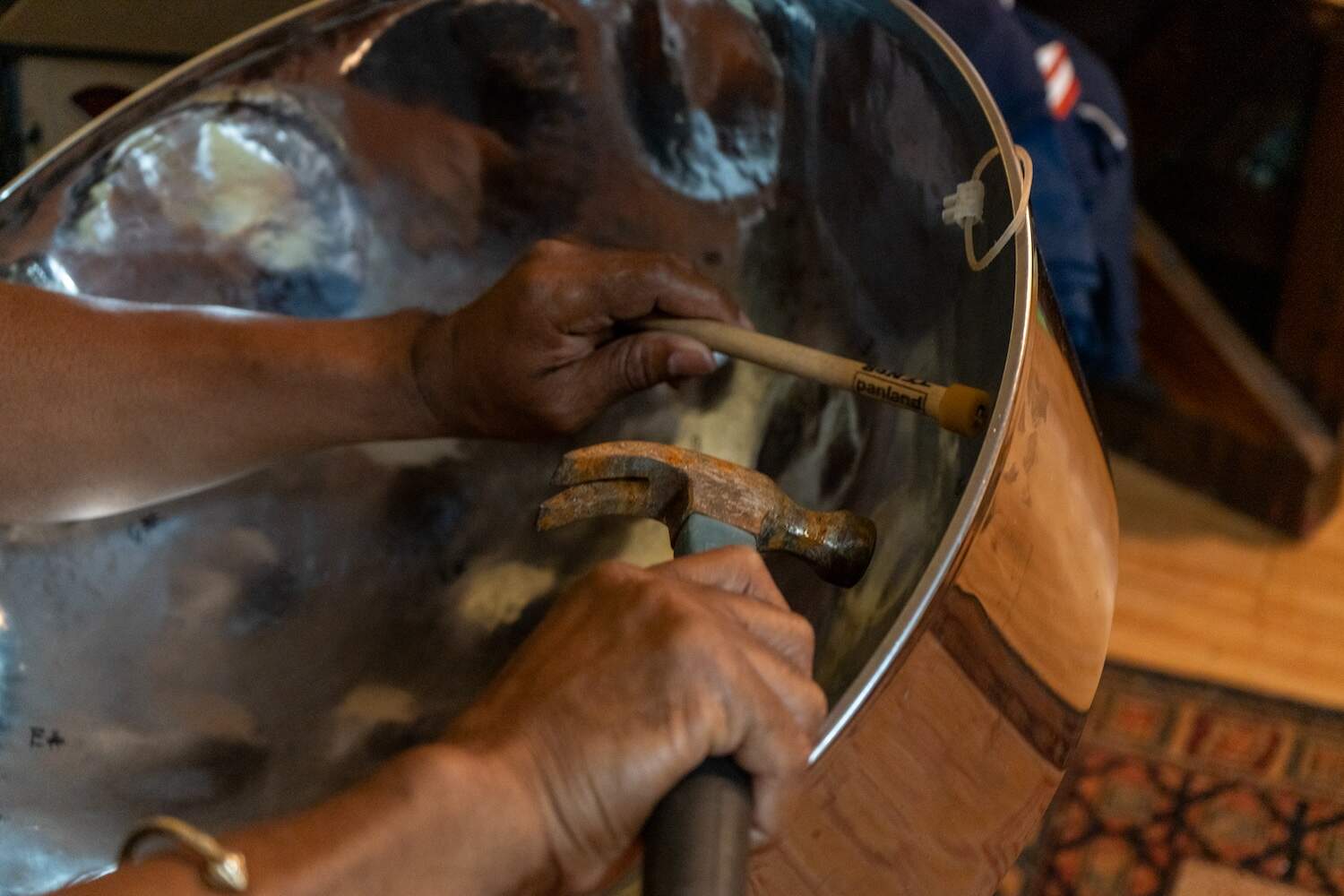
When Africans were kidnapped and taken to the Americas to work as enslaved laborers on sugar plantations, Johnson said, music was often used in rituals and as a way for communities to communicate and share their experiences.
“The slaves in Trinidad used music as a way to help them as they harvest, they used the djembe as part of their rituals,” he said. Once the British took control over the islands, they banned the drums, language and religion in fear of an uprising.
Without the drums, Trinidadians turned to bamboo sticks and then oil barrels made out of tin.
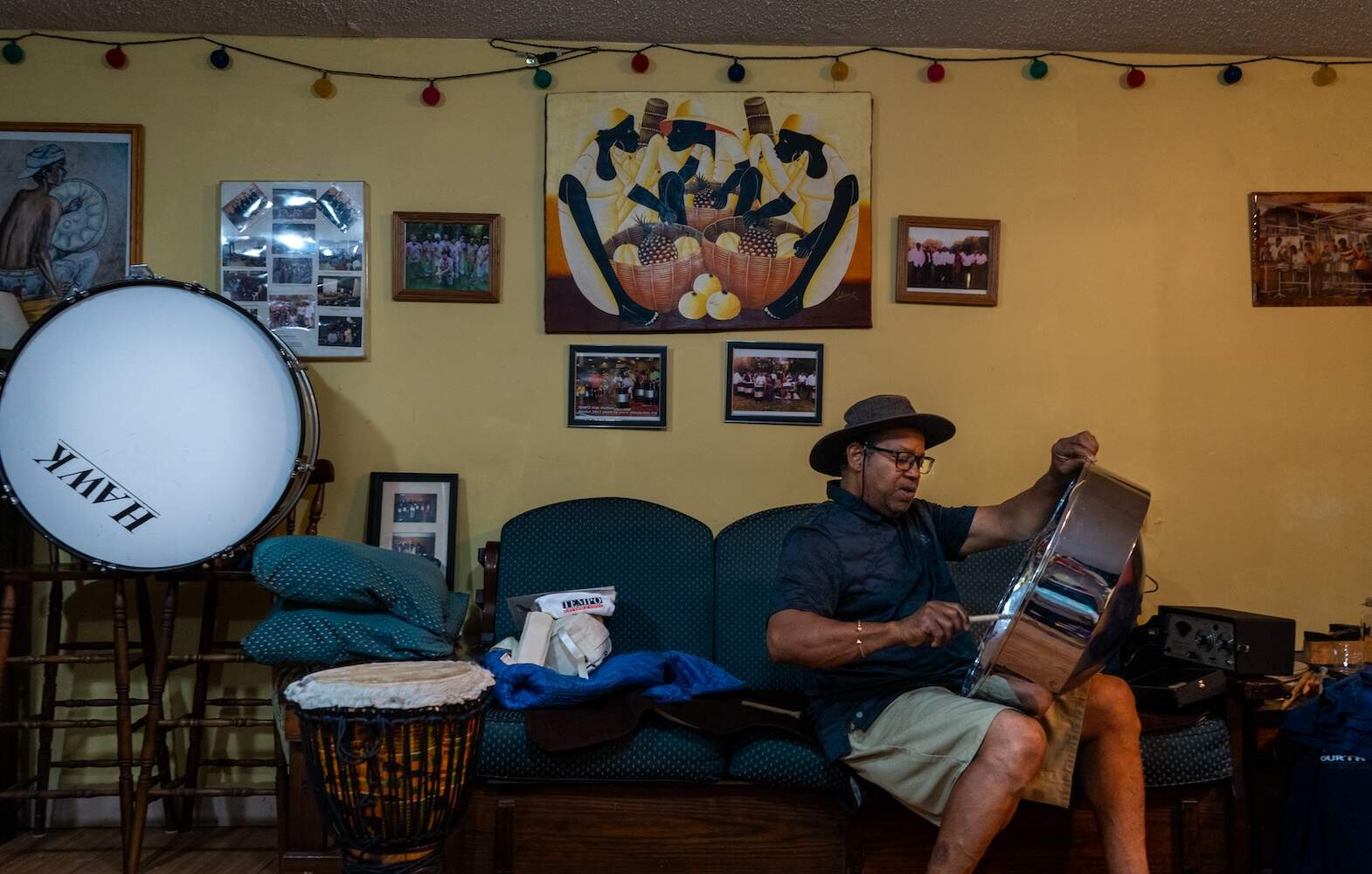
Today, a steel band could consist of 200 to 500 players with different types of pans, such as lead tenor or bass, Johnson said.
The future of Boston Caribbean Carnival
Boston's Caribbean Carnival has been a mainstay of the community for more than 50 years. And while the tradition is slowly spreading to other U.S. cities like Houston, Atlantic City, Los Angeles and Charlottesville, Lezama said many people still don't understand Carnival's meaning.
“They see it as a party, a block party, but in fact, we’re actually here to celebrate our roots," he said. "We’re here to celebrate our accomplishments for the year. We’re here to put together a presentation and celebrate family.”
The pandemic, rising costs, violence near the parade and disengagement among the community have led to a decline in participation in recent years.
However, the organizations are excited to continue the legacy.
It's a celebration that brings cultures from across the Caribbean together, said Selassie Alleyne, a member of Tempo International Rhythm Section.
"Just think about this [as] a different island. Jamaicans, Trinidadians, Montenegrins, Bajans, and like, who's who, ... You're meeting each other through these kinds of social activities," Selassie Alleyne, a member of Tempo International Rhythm Section, said.
As the groups gear up for the celebration, Shillingford said she's looking forward to a "very successful and exciting" Carnival.
"If we're talking about culture, we cannot just talk about culture — we need to do culture," she said.

